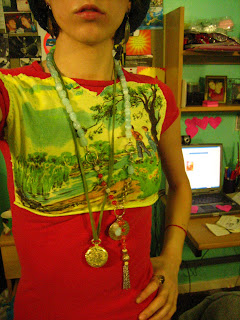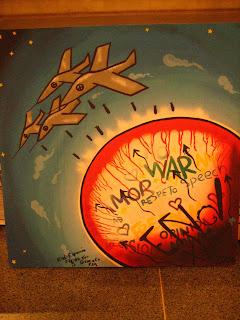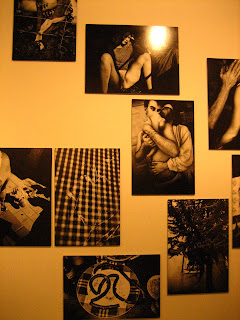
THE PLIGHT OF THE BRITISH PEOPLE during World War II is incredibly stirring, and difficult to fathom, particularly for Americans (for obvious geographical reasons). As I am getting to know the city intimately, I thought the time ripe for an exploration into the destruction of London by the Blitz bombings of World War II. A German bomber plane actually crash landed a mere block from my flat in 1941. It was believed that the plane was intended to bomb Buckingham Palace, but was clipped by a British defense pilot, and sent hurtling into a train station courtyard at some 350 miles per hour.
To know more, I commuted to the
Imperial War Museum today. It is a bit off the beaten path of most tourists, and borders a working class neighborhood, complete with a make-shift soccer field nestled in the side gardens. The museum was a profoundly moving experience for me. Firstly, the majority of conversations around me indicated that not only was I surrounded almost exclusively by Britons (an odd museum experience in multicultural London, to say the least) but the people around me were swapping stories of their family's station during World War II.
This woman's father was among the children evacuated from London, and sent to live in foster care in the country for four years...That young man's grandfather was killed on D-day and his letters are among his mother's possessions...My street in London was destroyed...Mine too...My grandparents lost everything they owned...My grandmother was a nurse, though only fourteen when the war broke out...My grandfather was a German POW for two years.Strangely, while drifting from display case to display case, in and out of model bomb shelters, reels of film running in dark rooms and niches, I began to feel an incredible affinity for the people exchanging stories in my presence. My grandfather also served in the war, losing his left arm at the age of 21. The patriotic sentiment, the mixture of laughably silly propoganda posters and horrific black-and-white images, seemed familiar, not in a benign way, but in a unifying one. Truly, a world war.
Perhaps the strength of my response was due to the fact that I came to the museum alone, as a mission that was personal. Or, perhaps it was the particular exhibits I saw...focusing on the plight of British children during WWII, and the atrocities of the Holocaust. (My interest being in the human side of war, the innocence shattered, lost, the civilians, the casualties who did not opt into war...who were swept up by the carnage of an impasse between particular men. Though there is attention paid in the Museum also to the technical aspects of war, the ingenuity forced by desperation.) But I left the museum energized as well as drained, hopeful as well as sobered...and very, very grateful for such a powerfully moving experience.


































